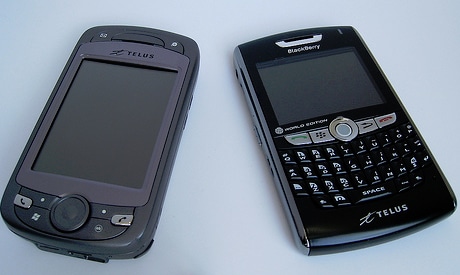
Power lines, computers, wireless networks, cordless portable phones, cell phones, cellular towers, compact fluorescent lamps (CFL light blubs) – they all emit electromagnetic fields (EMFs). EMFs are all around us, and some researchers believe they could be responsible for serious health issues.
Sweden is the only country to recognize electromagnetic hypersensitivity as a disability, but the evidence that man-made EMFs are having harmful biological effects is mounting.
Olle Johansson, associate professor at the Karolinska Institute in Stockholm, has been investigating the effects of electromagnetic fields on humans for almost 30 years. Johansson believes the existing EMF safety standards – based solely on heat generated by electromagnetic fields – do not adequately protect public health. His research suggests EMFs act like an allergen, disturbing the immune system and eliciting various allergic and inflammatory responses.
In a February 2009 speech, Dr. Thomas M. Rau, medical director at the Paracelsus Clinic in Switzerland, said he estimates 3 to 8 percent of populations in developed countries experience serious electrohypersensitivity symptoms, while 35 percent suffer from mild symptoms. Rau said the current "Electromagnetic load" is a hidden factor in many illnesses and disabilities, including attention deficit disorder, migraines, Parkinson's, arrhythmia, cancer and several other health issues – and he's not alone in this thinking.
Dr. Martin Blank, a researcher in the department of physiology and cellular biophysics at Columbia University for more than 40 years, believes EMFs could lead to Alzheimer's disease, dementia and breast cancer. Blank was part of a global consortium of scientists who produced a report that reviewed the body of scientific research related to the biological, health and environmental effects of electromagnetic emissions. The BioInitiative Report, a groundbreaking 600-page paper released in August 2007, called for major reductions in what are considered safe levels of electromagnetic emissions.
Blank's research focuses on how the body's cells react to EMFs. He has discovered EMFs are causing cells to make new proteins that they haven't made before, a sure sigh of stress. "The cells themselves are telling us that they're in trouble," Blank said in a recent interview. "These stress proteins are made with all these different electromagnetic fields. They're made with power line EMFs, they're made with cellphone EMFs and there a clear indication that the cell senses this stuff as potentially harmful."
In response to the BioInitiative Report, national and international bodies are pushing for significant changes to their regulatory frameworks for levels of radio frequency radiation and other electromagnetic emissions.
In April 2009, the European Union approved a comprehensive, 29-point resolution to, among other things, study the "adequacy" of EMF limits, citing several countries – China, Switzerland, Russia and nine EU countries – that have already reduced maximum exposure limits as a preventative measure. The resolution also calls for member states to recognize electrohypersensitivity as a disability.
Stateside, politicians are also weighing in on the debate with their concerns. In November 2008, Congressman Dennis Kucinich, chairman of the Domestic Policy Committee, sent a letter to Federal Communications Commission (FCC) Chairman Kevin Martin detailing his concern with the approval of "White Spaces" devices for wireless communications in the home. Kucinich wrote that use of these devices "will lead to the repeated, chronic, long-term exposure of individuals, at all age levels, and to more frequencies and quantities of radiofrequency (RF) radiation at very close range than is currently the case."
Kucinich also cited a National Academy of Sciences report that mirror's the National Toxicology program's conclusion that "the research record upon which FCC's RF Safety Guidelines are based does not adequately safeguard the public from non-thermal chronic exposures."
With research backing up long-held suspicions, it seems it's only a matter of time until worldwide EMF standards see an overhaul.
Photo Credit: midnightglory










